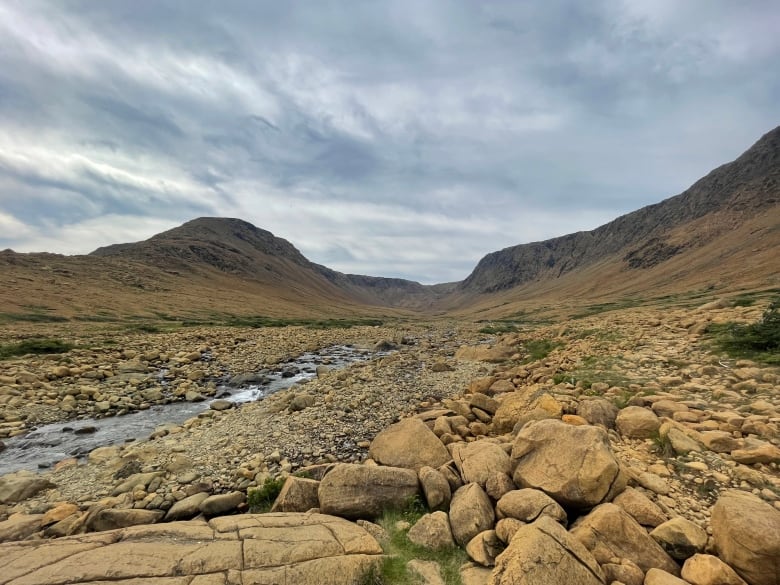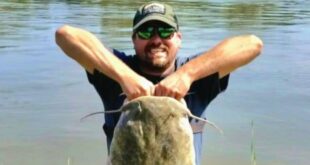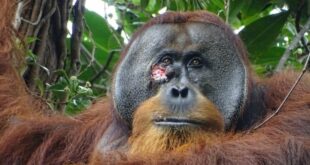Despite high pH levels, Penny Morrill and her team found bacteria in the Tablelands' spring water

Researcher Penny Morrill says there are times during her work when Newfoundland's Tablelands feel otherworldly.
"It looks like you're looking at Mars," the low temperature geochemist told The Current's Matt Galloway.
The Tablelands in Gros Morne National Park, a UNESCO World Heritage Site, is one of the planet's most unique landscapes. Its orange peridotite rocks are straight out of the Earth's mantle, thrust up to the surface thanks to ancient continental drift.
As a result, it's got a high concentration of toxic metals that makes it near impossible for any plant to call this landscape home — a stark contrast to the forested area on the gabbro rock perpendicular to the Tablelands.

But the Tablelands are not just similar to Mars in looks only. Morrill, whose research in the Tablelands is funded by the Canadian Space Agency, has found bacteria living in the local stream's high pH currents as a result of a natural process called serpentinization.
Morrill said it's possible that serpentinization also happens on Mars, so she's researching what the Tablelands in Newfoundland can reveal about finding either past or current life on the Red Planet.
"If there might be life on Mars, it would most likely be in the subsurface, which is protected from [solar winds and radiation]," she said.
"So serpentinization, since we know now that they can support life on Earth and there's chemical energy there to support life on Earth, potentially, could they currently or in the past have supported life on Mars?"
The answer's in the springs
Serpentinization is a reaction that happens between groundwater and peridotite rocks, creating extreme conditions for life.
"It increases the pH of the water up to … 12 or 13," she said. "This is similar to the pH that you would get in bleach."
"We were interested in trying to figure out could anything even live in this extreme environment."

Morrill first came to the Tablelands in 2009. She wasn't aware of any groundwater springs that existed in the Tablelands, but she did hear rumours about their location within the landscape.
She said these springs are identified by white carbonate precipitate, which is formed when carbonates — a type of carbon-based molecule — react with other substances in a liquid.
"I had just [spent] all day searching for this white carbonate precipitate on these orange rocks, and I really had just gotten completely discouraged," she said.
"Then, all of a sudden, at the moment I gave up, I found exactly what I was looking for."
Morrill's team started swabbing different surfaces using life detection instruments — and to their surprise, they found Adenosine triphosphate, an organic compound she called "the energy molecule of life."
"Then we started filtering the water, and then we looked at the filters and under a microscope we found bacteria on the filters," she said.
"So all of a sudden it completely opened our eyes to the potential that this very high ph water has. [It's] very low in organic carbon, very low nutrients, [but] it's actually supporting life."
An extraordinary organism
This was incredibly peculiar to Morrill. Like plants, some bacterial organisms will usually convert carbon dioxide into organic matter to grow, she explained. What's more, water with high pH levels usually have low amounts of carbon dioxide.
It turns out the bacteria she found were using carbon monoxide instead of carbon dioxide.
"So potentially, carbon monoxide may be one of the inorganic carbon sources for the base of the food chain," she said.
In another site that Morrill works in, the Cedars Gateway in California, she said her colleagues found a "similar or the exact same organism."
"They even found the organism in a high-pH mine tailings from ultra basic rock [like peridotite]," she said.
"It was a new organism, and we called it Serpentinomonas."

Morrill doesn't know why the same organism appears in both Newfoundland and California. But she is excited about what these findings could mean for the potential of life to develop on Mars.
She said there is a potential that serpentinization is either currently happening in the subsurface of Mars, or has happened in the past — and it's these sites that should be studied when looking for life on Mars.
"I'm always for looking for life in locations where you get serpentinization springs because it's bringing the life to the surface — or at least some sort of biomolecules on the surface for you, so you don't have to do extensive drilling," she said.

Up north in Nunavut, geobiologist and planetary scientist Haley Sapers is studying whether serpentinization could also be a potential source for methane on Mars.
"We know that there's methane on Mars, and we have no idea where it's coming from," she said.
Sapers studies methane that seeps from extremely salty cold springs on Axel Heiberg Island, an uninhabited island in Nunavut's Qikiqtaaluk regions.
"This is the only place in the world where you have these methane seeps in permafrost," she said. "So it's the only place in the world where there exists an analogue for the type of methane release that we think might be happening on Mars."
A local celebrity
For the time being, Morrill is stuck researching serpentinization on Earth — but her hard work isn't going unnoticed. Her public outreach has allowed her to connect with tourists and enthusiasts, young and old.
Her research has also made her a bit of a local celebrity. On the boardwalk leading up to the springs, there's a picture of Morrill from 2009, sampling a showing with a pH of 12.
Morrill wasn't aware of the photo until a friend sent it to her. She said she's "humbled" by the gesture.
"My research is so minor compared to what other people have done here in the park," she said. "But anyways, this is wonderful."

Add some “good” to your morning and evening.
A variety of newsletters you'll love, delivered straight to you.
*****
Credit belongs to : www.cbc.ca
 MaharlikaNews | Canada Leading Online Filipino Newspaper Portal The No. 1 most engaged information website for Filipino – Canadian in Canada. MaharlikaNews.com received almost a quarter a million visitors in 2020.
MaharlikaNews | Canada Leading Online Filipino Newspaper Portal The No. 1 most engaged information website for Filipino – Canadian in Canada. MaharlikaNews.com received almost a quarter a million visitors in 2020.







